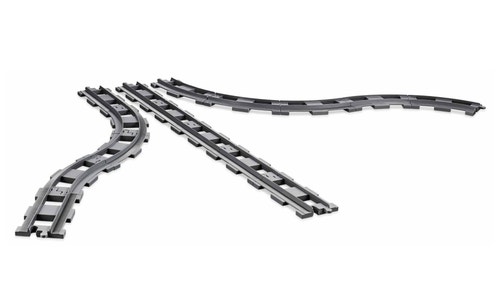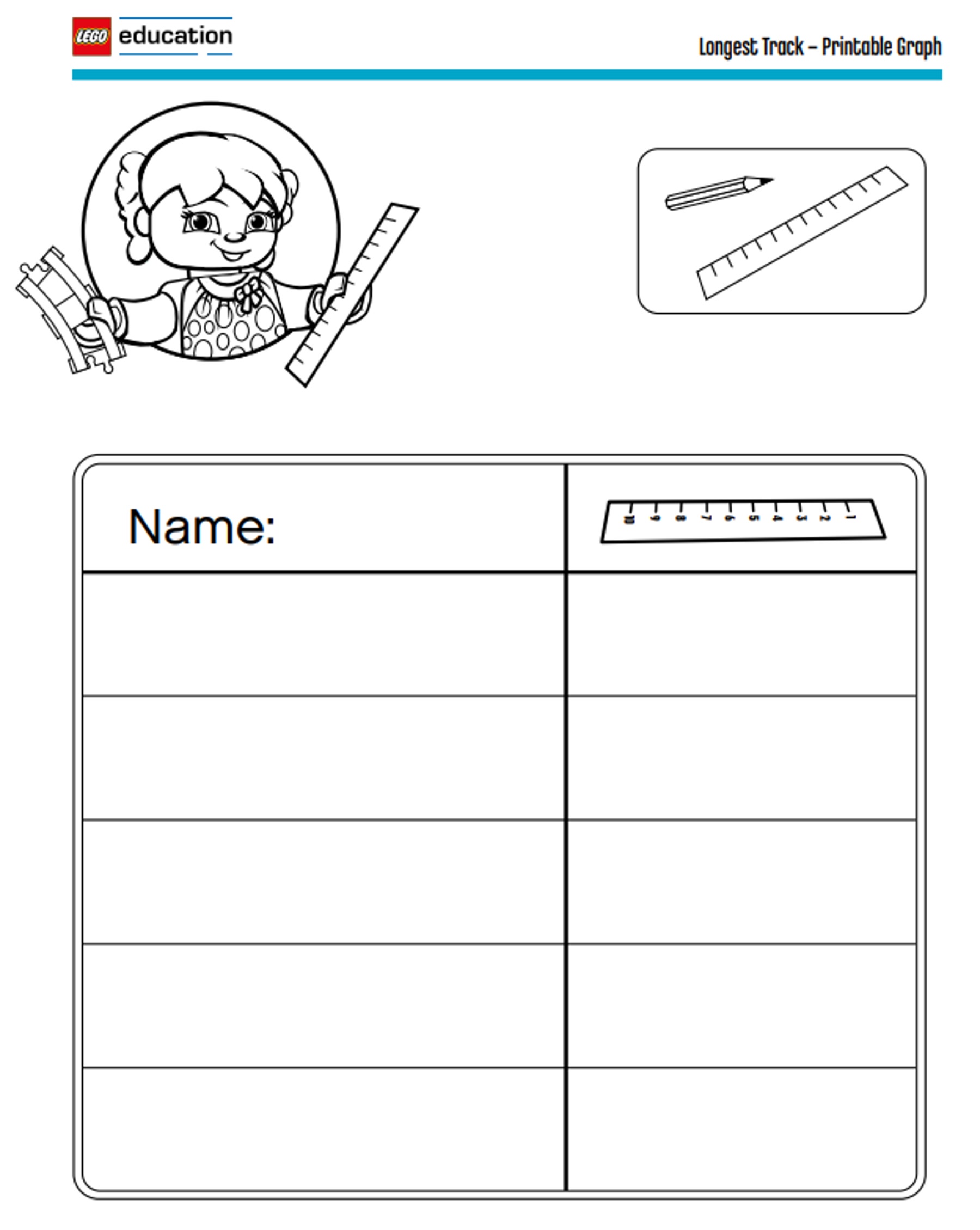Longest Track
In this lesson, children will practice measuring, learn about standard and nonstandard measurement and compare distances and length

Connect
Gather the children around the train set and show them two different trains; one with two train cars and one with three.
Place the trains side by side and ask children to compare them.
Consider asking questions like:
- Which is shorter?
- Which is longer?
- How can you tell?Tell the children that all sorts of things can be measured. For instance, the length of each train can be measured to verify which is shorter and which is
longer.Using a standard method of measurement like a ruler or tape measure, ask the children to help you measure both trains, then record your findings.
Measure again using the number bricks stacked together as a form of nonstandard measurement. Record your findings.
Facilitate a discussion about your findings.
Construct
Challenge the children to work together to build train tracks that reach as far across the room as possible. Start at the wall for easier measuring later on.
Encourage them to experiment with different designs, but each must use all available track pieces.
Help the children measure each design using a standard form of measurement. Model measuring in a straight line from the start of the track (the wall) to where it
stops in the room. The tracks will be curved, so be sure to point out that you are not measuring the length of each piece but how far the track reaches into the room.Give each child a copy of the printable graph and ask them to record each measurement.

Contemplate
Facilitate a discussion about the children’s experience building the tracks.
Consider asking questions like:
- Which track design was the longest and why?
- How did you measure the track?
- Why is it important to measure distance and length?
Continue
Say: “We can measure all sorts of things!”
Explain that people often want to measure height.
Have the children work in pairs to build a tower or crane.
Ask them to measure their models and compare.
Challenge children to make their models even taller. If they are ready, ask them to work together, using as many bricks as possible, to build a mega crane. Make sure
to measure and document it.
Did you notice?
Observing the following skills can help you monitor whether the children are developing the necessary competencies in math.
Comparing two or more objects
Exploring measurement, and beginning to use standard and nonstandard forms of measurement
Recording simple data in a chart or graph
Teacher Support
Children will:
- Practice measuring
- Begin to learn about standard and nonstandard measurement
- Compare distances and length
For up to 4 children
The Mathematics guidelines from the National Association for the Education of Young Children (NAEYC) and HeadStart have been used to develop the Math Train lessons. Please refer to the learning grid for an overview of the learning values referenced throughout this Teacher Guide.
The learning goals listed at the end of each lesson can be used to determine whether or not each child is developing the relevant early math skills. These bullet points target specific skills or pieces of information that are practiced or presented during each lesson.




